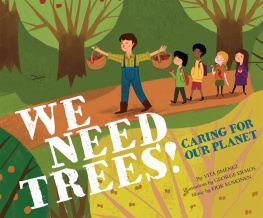1.1 Introduction
Plants have been used for treating different diseases and for alleviating pain since ancient times. However, how plants have been used for curing a particular disease or symptoms differs in different cultures. The Ayurvedic concept of using plants for healing purposes originated around 500 B.C. in India. Engravings of medicinal plants on ancient buildings indicate that they have been used for treating different diseases for a long time. Assyrian clay tablets almost 4000 years old revealed the use of 250 medicinal and poisonous plants, including Atropa belladonna , Mandragora officinarum , and Papaver somniferum . Emperor Shen Nung described the use of 350 drugs in 3000 B.C. Later in India, Ayurveda mentioned the use of traditional medicine in about 900 B.C.
Almost 3000 plants are known to possess medicinal potential but more than 6000 plants are used by traditional herbal practitioners. The World Health Organization has reported 20,000 plant species studied for medicinal purposes, as more than 80% of the population of developing countries is facing difficulties due to synthetic drugs and therefore relies on traditional medicines to maintain their health. Discovery of phytochemicals in making drugs and their use in dietary supplements are expected to increase in future, as through advancement in analytical techniques, more knowledge is becoming available about the phytochemistry and metabolomics of medicinally important plants, which is not only helpful in the identification of these compounds but many phytochemicals of medicinal importance can be identified and used for various therapeutic purposes.
Many phytochemicals with medicinal importance include molecules which are synthesized during secondary metabolic activities of plants and are therefore commonly known as plant secondary metabolites or plant natural or functional products . They include many alkaloids , glycosides , flavonoids , terpenoids , and tannins . They also form an important criterion in plant classification. Identification and isolation of these bioactive compounds is crucial in the development of modern plant-based drugs. Medicinal activities of these bioactive compounds are mostly evaluated on model animals like rats, and many of the known compounds are still not applied on humans. Therefore, there is sufficient need to evaluate medicinal activities of plant-based phytochemicals on humans and to develop drugs which do not have any side effects like antibiotics.
1.2 Phytochemicals of Medicinal Importance of Woody Plants
Alkaloids are important medicinal compounds with nitrogen-containing molecules and their presence gives a bitter taste to plants. So far 12,000 alkaloids have been elucidated from plants which are part of the defensive system of plants. Due to their bitter taste, many herbivores and pests cannot consume them as they are difficult to digest. Many Acacia spp. are a source of important alkaloids of medicinal importance. Aztecs used alkaloid drugs for hallucination, divination, and magic-religious purposes. Alkaloid extracts from plants like Hyoscyamus , Atropa , and Datura were used as aphrodisiacs. Many alkaloids which have been known to be involved in execution cases throughout history are aconitine, atropine, colchicine, mescaline, morphine, and strychnine. Alkaloids like benzophenanthridine, protoberberine, psychotrines, and michellamine B have anti-HIV activities.
Terpenoids are another class of medicinal compounds which are carbon- and hydrogen-containing units also known as isoprenoid compounds. Over 40,000 terpenoids are reported from different parts of economically important plants. Many monoterpenoids make fragrances of plants which plants biosynthesize in their plastids in order to attract their pollinators, and many of these essential oils act as insect and mosquito repellents and also inhibit microbial growth and infections. Many of these essential oils, which are mostly monoterpenoids, have pleasant fragrances and are therefore used in food, most commonly as herbs due to their aroma and taste and also due to their antimicrobial properties. Essential oils like eucalyptol, menthol, linalool, nerolidol, limonene, eugenol, isoeugenol, myrcene, and pinene exhibit many antimicrobial properties against a wide range of microorganisms. Betulinic acid is a triterpenoid which is known to possess anti-HIV activities and to cause membrane disruption by lipophilic compounds. Terpenoids from the bark of the tree Pteleopsis suberosa in Mali are known to inhibit gastric ulcer. The stem bark of Ekebergia capensis contains a mixture of approximately ten triterpenoids which possess antimalarial activities.
Flavonoids are phenol-containing compounds which are important antioxidant, anticancer, cardioprotective, and neuroprotective compounds. Over 6000 flavonoids are reported in plants where they form colored pigments in plants, mostly in flowers and fruits, and provide protection against ultraviolet (UV) light. They are synthesized from phenylalanine and classified as chalcones, flavones, flavonols, flavandiols, anthocyanins, proanthocyanidins, and aurones. Many flavonoids like anthocyanins are antioxidants and are medicinally important compounds. Berries like bilberries, blueberries, cranberries, raspberries, mulberries, and strawberries and many citrus fruits are rich sources of flavonols of medicinal value including quercetin, which possesses anticarcinogenic and antiatherosclerosis activities. Their role as a natural modulator of cancer multidrug resistance is also important. Flavonoids like biochanin and daidzein and green tea polyphenols like epigallocatechin-3-gallate (EGCG) can inhibit multidrug resistance activities in many cancer cells by inhibiting P glycoprotein transporters.
Polyphenols of blueberries and teas provide protection against Parkinsons disease and Alzheimers disease. Kaempferol and its derivatives are also found in many fruits which are also antioxidant, anti-inflammatory, and antiulcer agents. Many edible fruits which contain anthocyanins like edible berries have high nutritive value and their intake provides protection against many diseases. They are also commonly used in many nutraceutical products and their use is being recommended by physicians due to their antioxidant nature, nutritive value, and ability to stimulate some hormones. The role of flavonoids and their derivatives is also being explored as possible anti-HIV agents as they are reported to inhibit HIV-1 protease, integrase, and reverse transcriptase. Isoflavones can inhibit transcription by repressing HIV-1 promoter activity. Coumarins reported from more than 1300 species are phenolic compounds which possess anti-inflammatory, antimicrobial, and antiviral activities. Hydroxycinnamic acids and phytoalexins, which are coumarin derivatives, are also known to have antimicrobial and antifungal activities.














